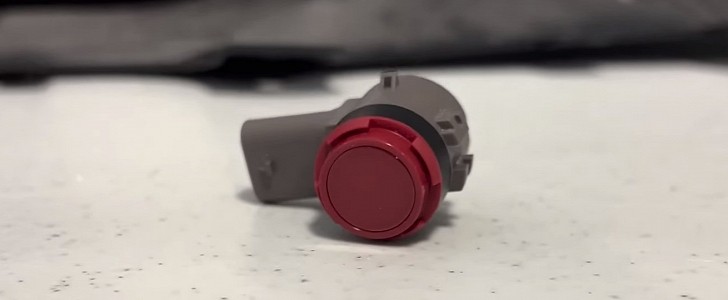Tesla has decided to drop the ultrasonic sensors from its vehicles in another move to transition to pure Tesla Vision in the future. The measure was analyzed by the experts at Munro & Associates, taking into account both the cost-cutting aspect and the impact on safety.
When Tesla eliminated the radar support in its vehicles starting in 2021, people saw it as a cost-cutting measure that could potentially affect safety. Indeed, the safety assist features were degraded right after the change. In the beginning, the Tesla Vision vehicles lost Smart Summon and Emergency Lane Departure Avoidance. Autopilot speeds were also limited to 75 mph (121 kph), and the minimum following distance was increased. Later on, these changes were gradually reversed via OTA updates.
While radar sensors had far-reaching safety implications, the ultrasonic sensors that Tesla forgoes this time are more of a convenience feature. We assume the Tesla Vision story holds even less water this time, and it’s cost-cutting for the win. Sure, some features will go to the dustbin, at least for a while, but most of them were underbaked, and few people dared to use them. Autopark, for instance, was a public menace.
The teardown firm Munro & Associates has analyzed the implications of giving up ultrasonic sensors and has come up with some interesting conclusions. First is the amount of money Tesla saves, which is staggering. Although the sensors are not very expensive, they are not the cheapest either. Then there are wiring harnesses and connectors to consider, not to mention the controller chips.
Mike Lane estimates on Munro Live that everything could probably amount to $150 per car. While this seems like a small amount, consider that Tesla will likely sell around two million vehicles next year. This means it could easily save $300 million, even before counting the logistics of building and stocking the sensors.
Of course, the safety implications mean no more automated parking and such, but also mundane tasks like obstacle detection would be nonexistent. Sure, the cameras would pick objects around the car, but there are a lot of dead zones, like up to three feet (one meter) in front of the vehicle. On the plus side, Tesla recently announced a partnership with Samsung to upgrade from 1.2-megapixel cameras to 5-megapixel cameras, which could enhance object recognition.
While radar sensors had far-reaching safety implications, the ultrasonic sensors that Tesla forgoes this time are more of a convenience feature. We assume the Tesla Vision story holds even less water this time, and it’s cost-cutting for the win. Sure, some features will go to the dustbin, at least for a while, but most of them were underbaked, and few people dared to use them. Autopark, for instance, was a public menace.
The teardown firm Munro & Associates has analyzed the implications of giving up ultrasonic sensors and has come up with some interesting conclusions. First is the amount of money Tesla saves, which is staggering. Although the sensors are not very expensive, they are not the cheapest either. Then there are wiring harnesses and connectors to consider, not to mention the controller chips.
Mike Lane estimates on Munro Live that everything could probably amount to $150 per car. While this seems like a small amount, consider that Tesla will likely sell around two million vehicles next year. This means it could easily save $300 million, even before counting the logistics of building and stocking the sensors.
Of course, the safety implications mean no more automated parking and such, but also mundane tasks like obstacle detection would be nonexistent. Sure, the cameras would pick objects around the car, but there are a lot of dead zones, like up to three feet (one meter) in front of the vehicle. On the plus side, Tesla recently announced a partnership with Samsung to upgrade from 1.2-megapixel cameras to 5-megapixel cameras, which could enhance object recognition.










